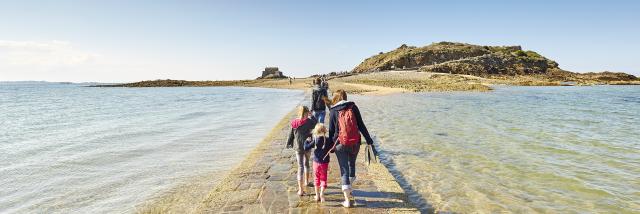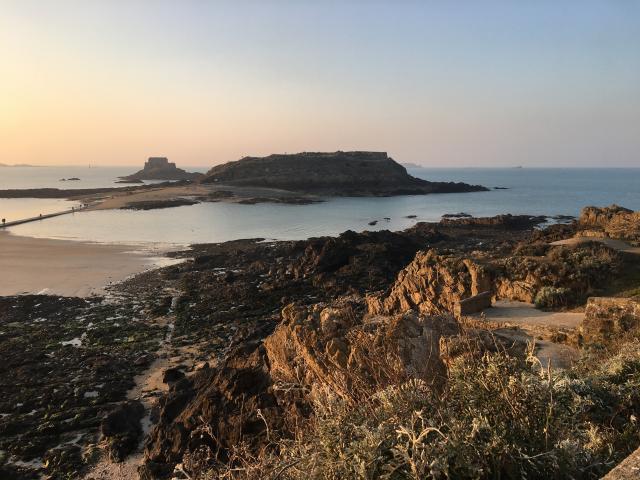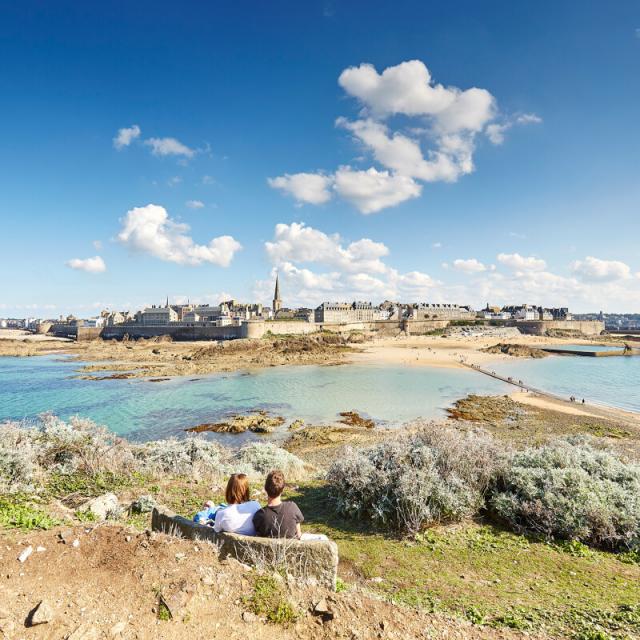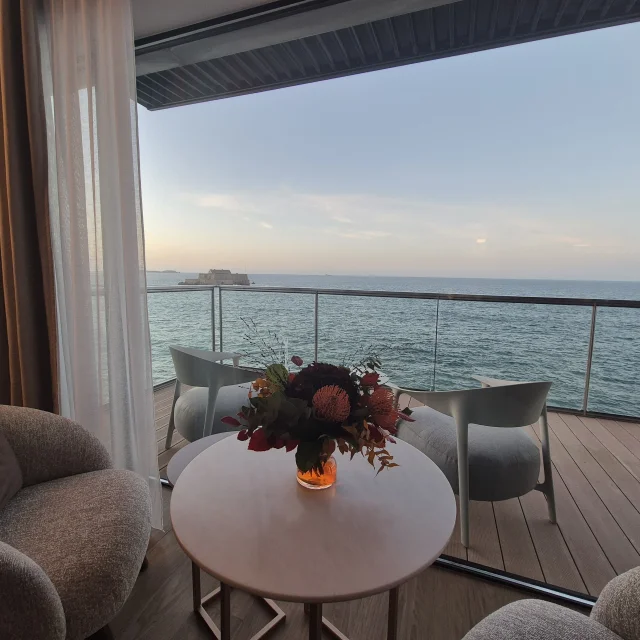 Fort Du Petit Be Saint Malo Smbmsm 413
Fort Du Petit Be Saint Malo Smbmsm 413 Fort National St Malo Smbmsm 9177
Fort National St Malo Smbmsm 9177 ©Thibault Poriel - Intra-Muros - Saint-Malo
©Thibault Poriel - Intra-Muros - Saint-MaloVauban and maritime fortifications
Advanced posts are numerous around Saint-Malo. In order to defend the kingdom from English and Dutch invasions, Louis XIV entrusted Vauban with the protection of the French coast. But the man who carried out the work was none other than Garangeau, appointed by Vauban as “chief engineer and director of the fortifications of Saint-Malo”. The citadels built on rocks in the middle of the sea bear witness to the military genius of the Sun King’s engineers.
In order to protect the town, the Bay of Saint-Malo was fortified as early as the 17th century. Based on plans by Vauban (King Louis XIV’s chief architect), Garangeau built the 4 forts on the offshore islets, making the harbour entrances impregnable.
The Fort National, at the foot of the ramparts
The Fort National, known as the Fort Royal in the time of Louis XIV, stands on the Islet rock. Built in 1689 by Garangeau to Vauban’s plans, it protected the ramparts of the corsair town. You can reach it on foot at low tide.
If you see the French flag hoisted over the fort, that means the site is open to visitors!
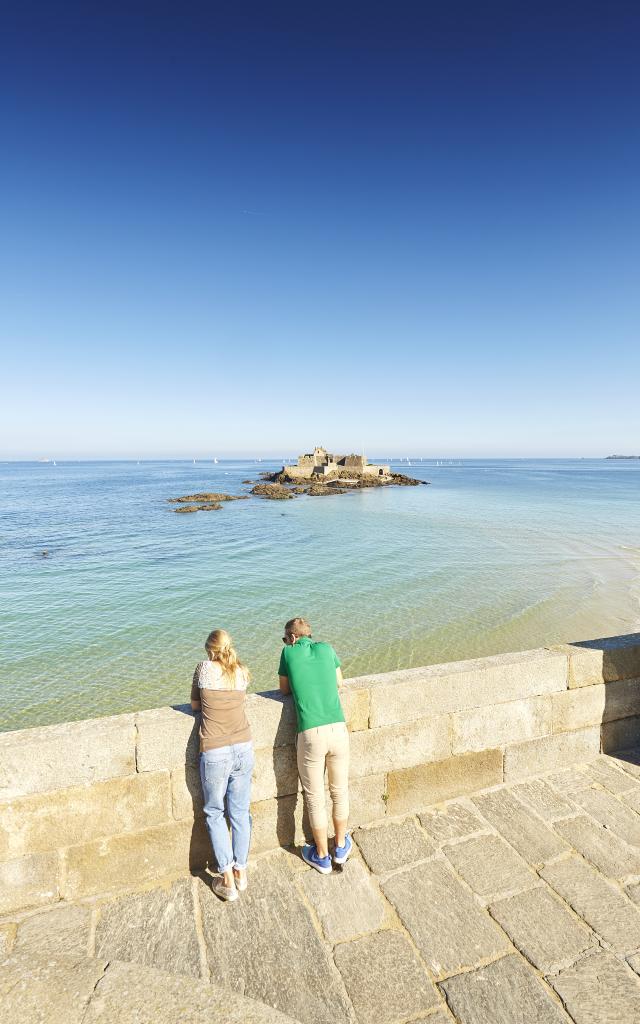 Fort National St Malo Alexandre Lamoureux 9140
Fort National St Malo Alexandre Lamoureux 9140 Fort National St Malo Alexandre Lamoureux 9135
Fort National St Malo Alexandre Lamoureux 9135 Fort National St Malo Alexandre Lamoureux 9132
Fort National St Malo Alexandre Lamoureux 9132 Fort Du Petit Be Saint Malo Smbmsm 415
Fort Du Petit Be Saint Malo Smbmsm 415 ©Thibault Poriel - Fort du Petit Bé - Saint-Malo
©Thibault Poriel - Fort du Petit Bé - Saint-Malo Fort Du Petit Be Saint Malo Smbmsm 423
Fort Du Petit Be Saint Malo Smbmsm 423The Petit-Bé fort
More confidential, the Petit-Bé fort, nestling behind the Grand-Bé island was completed in 1707, on the death of Vauban. It has now been restored by a private individual with a passion for maritime fortifications. It can be reached on foot or by ferry boat, depending on the tide. You need to be careful, and find out what time the tide is out for the day before setting off. To do this, take the reference time and calculate 1? hours before and 1? hours after. This will give you your access window. Visits are possible all year round.
Le fort de la Conchée, off Saint-Malo
Further out, four kilometres from the shore, facing the large Rochebonne beach, is the fort de la Conchée. This ship’s fort, 65 metres long and 32 metres wide, had a garrison of 200 men. Since 1989, it has belonged to the Compagnie du Fort de la Conchée association, which has already restored more than 80% of the building. Given the difficulties of access, the fort is only open to the public two days a year for the Heritage Days. Alternatively, take advantage of a virtual tour of the Fort de la Conchée offered on the monument’s website.
The Association of Friends of the Fort de la Conchée, offers tours during major events, including the European Heritage Days.
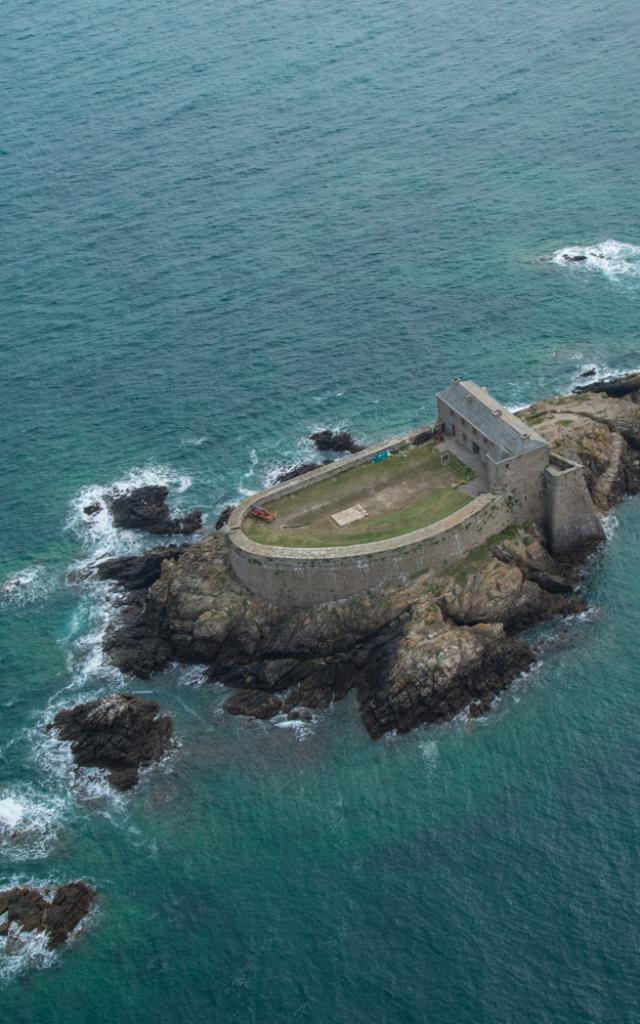 Fort De La Conchee Baie De St Malo Yann Langevin 9124
Fort De La Conchee Baie De St Malo Yann Langevin 9124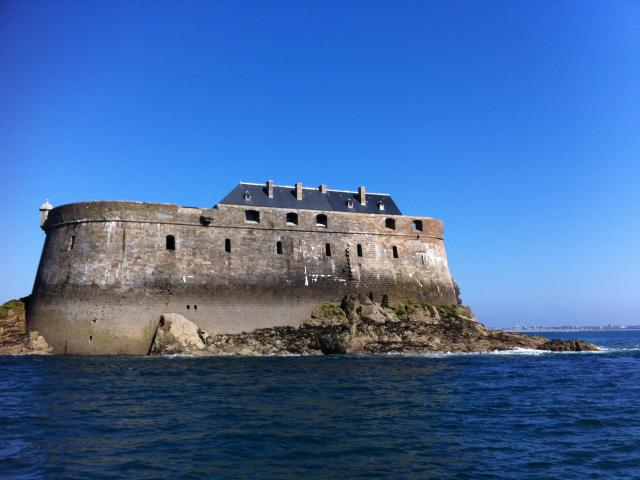 Fort De La Conchee Baie De St Malo Smbmsm 9116
Fort De La Conchee Baie De St Malo Smbmsm 9116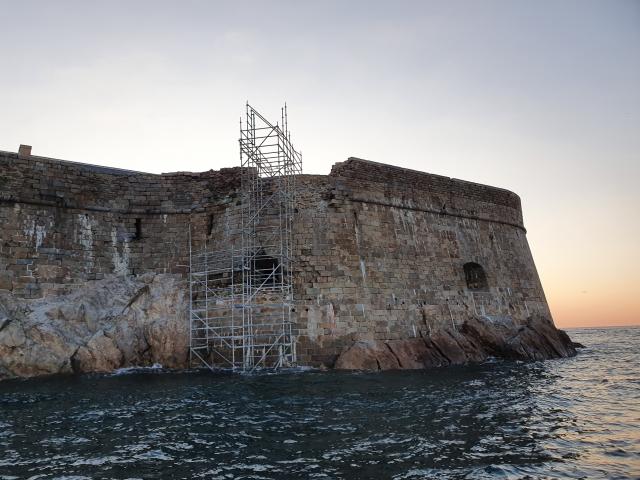 Sortie En Mer Pres Du Fort De La Conchee Baie De St Malo Smbmsm 106
Sortie En Mer Pres Du Fort De La Conchee Baie De St Malo Smbmsm 106